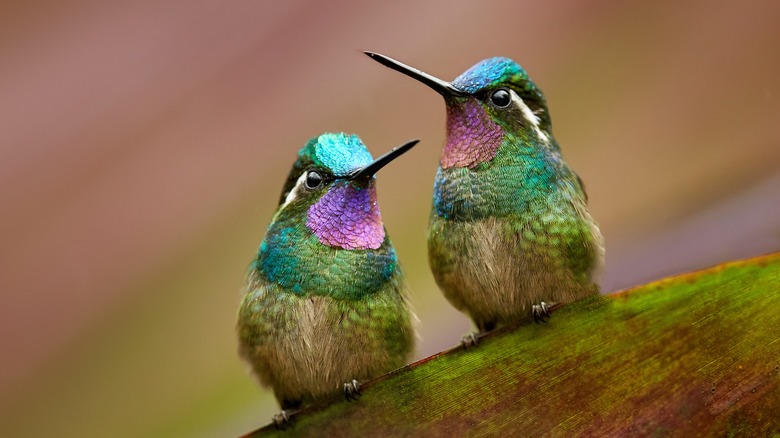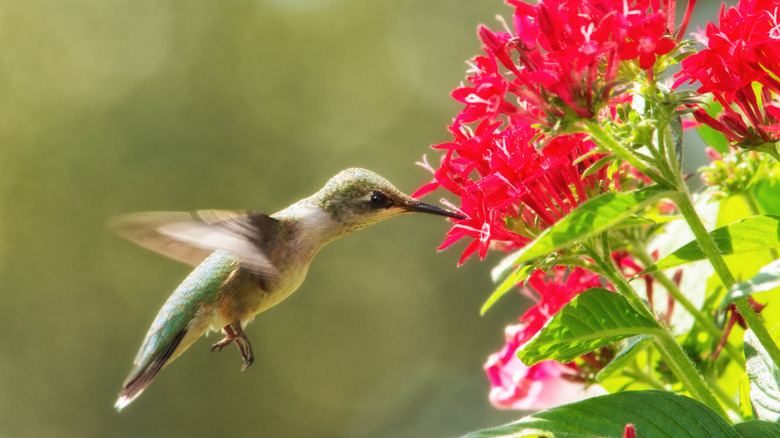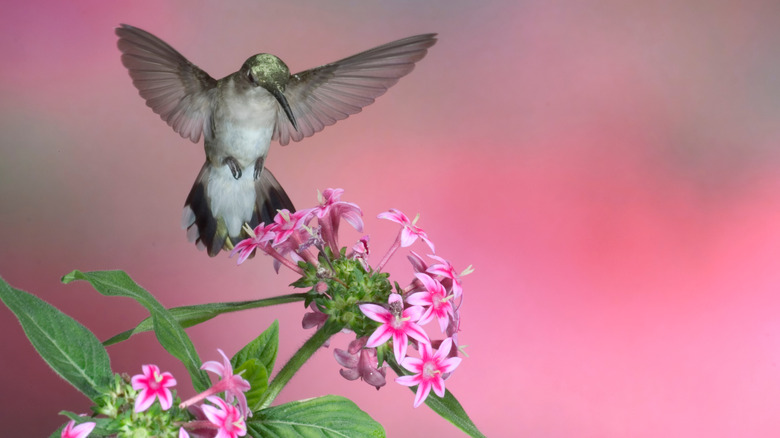The Easy-To-Care-For Flowering Plant That Hummingbirds Love
Choosing flowers that are as beloved by hummingbirds as they are by people is one of the most rewarding ways to construct a garden. Growing hummingbird-pleasing plants doesn't have to be difficult or limit your color palette. Pentas are stunning and easy-to-grow plants whose star-shaped flowers are sure to be a hit with both humans and hummingbirds.
Hummingbirds belong to the family Trochilidae and have been seen in every state but Hawaii. The tiny birds are fascinating to watch as they hover and dart between flowers, enjoying their nectar. While hummingbirds don't live in most northern states year-round, they return every spring after spending winters in the southern U.S., Mexico, and Central America. Hummingbirds aren't just beautiful garden visitors; they're also helpful in eating pests, including mosquitoes, aphids, and beetles. If hummingbirds haven't been attracted to your flowers, planting pentas and other flowers with tubular shapes could be a game changer for your garden.
Growing and caring for pentas
Even though pentas (Pentas lanceolata), also known as Egyptian star clusters, are only perennial in zones 10 and 11, they are so fast-growing that gardeners can grow and enjoy them as annuals that last all summer. Whether you opt to grow your pentas from seed or purchase them as starts, wait until after your last frost date to transplant them outside. Pentas thrive in full sun but can also grow in part shade.
While pentas benefit from well-draining soil with plenty of organic material, they can handle a wide variety of soil types, including clay and sand-heavy soil. They are also relatively flexible on the pH of their soil and can thrive in acidic, neutral, and slightly alkaline soils. While pentas benefit from regular watering, they are relatively drought tolerant once established, making them a great option for gardeners who want to attract hummingbirds while being waterwise.
Adding pentas to a hummingbird garden
Pentas come in a variety of colors, from pinks and reds to whites and purples, so you're sure to be able to find the perfect cultivar for your garden space. If your primary goal is to attract hummingbirds, consider primarily opting for shades of red and pink as hummingbirds tend to prefer those colors. The University of Florida Extension notes that some newer cultivars of pentas don't make good nectar sources for hummingbirds and other pollinators, so consider opting for traditional heirloom varieties.
Pentas are known for their ability to bloom all summer long, providing color from late spring until frost. While pentas look elegant alone in the landscape, they can also be combined with other flowering plants to transform your yard into a hummingbird haven. Include larger flowering perennials like beardtongue along with your pentas to create a garden that provides you and your feathered friends with months of joy and color. Most cultivars of pentas don't reach more than 2 feet tall and wide, making them ideal for the middle of gardens or as fillers in containers. Some compact varieties like the Lucky Star series even remain as short as a foot — the perfect size for the front of gardens and along walkways and paths.


